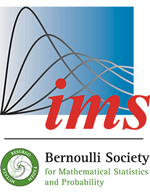Abstract
We introduce a class of partial correlation network models whose network structure is determined by a random graph. In particular in this work we focus on a version of the model in which the random graph has a power-law degree distribution. A number of cross-sectional dependence properties of this class of models are derived. The main result we establish is that when the random graph is power-law, the system exhibits a high degree of collinearity. More precisely, the largest eigenvalues of the inverse covariance matrix converge to an affine function of the degrees of the most interconnected vertices in the network. The result implies that the largest eigenvalues of the inverse covariance matrix are approximately power-law distributed, and that, as the system dimension increases, the eigenvalues diverge. As an empirical illustration we analyse two panels of stock returns of companies listed in the S&P 500 and S&P 1500 and show that the covariance matrices of returns exhibits empirical features that are consistent with our power-law model.
Citation
Matteo Barigozzi. Christian Brownlees. Gábor Lugosi. "Power-law partial correlation network models." Electron. J. Statist. 12 (2) 2905 - 2929, 2018. https://doi.org/10.1214/18-EJS1478





